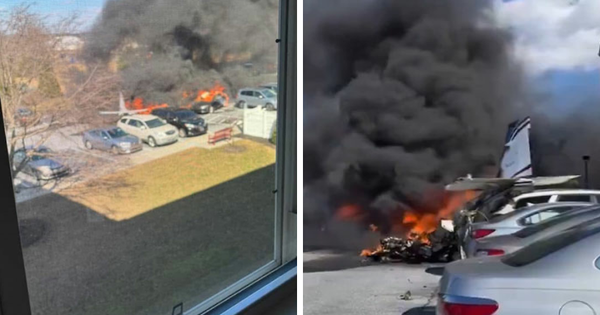Australia is facing dire skills shortages across many industries, from nurses to teachers to motor mechanics and beyond.
But one of the country's less visible skills shortages may end up having an outsized effect on Australian life: Welding.
"We're 70,000 welders short in Australia," CEO of Weld Australia Geoff Crittenden tells ABC RN's Saturday Extra.
Crittenden says as a result, there's a "huge risk" that Australia "will not be able to deliver a range of infrastructure programs".
"Defence, shipbuilding, roads, railways ... infrastructure projects require welders. And we're extremely short," he says.
He says this will be a "huge challenge" for Australia's transition to renewable energy in particular, considering the building of wind turbines, solar panels and hydropower that will be required.
So Crittenden is looking at different ways to remedy this — and one of his options is a program that trains prisoners for life on the outside.
Prisoner training in Australia
According to the Australian Institute of Health and Welfare, many Australian prisoners have education and skill levels well below the national average, with almost 2 in 3 (63 per cent) of prisoners having an education level of Year 8 or below.
Australia's rate of recidivism also remains stubbornly high, with 53 per cent of released prisoners returning to corrective services within two years.
Numbers like this have prompted calls for far more emphasis on rehabilitation and training programs in prisons, like those in Scandinavian countries (where recidivism hovers around 20 per cent).
One such program is now underway at the Langi Kal Kal minimum security prison in regional Victoria.
Corrections Victoria recently started offering a new welding certification to inmates there, via Federation University, Weld Australia and on-site prison industry staff.
The program, in the prison's Advanced Welding Training Centre, involves training on a standard welding booth, as well as on an augmented reality welding machine.
"[The augmented reality welding machine] is a very exciting piece of modern kit," Crittenden says.
"It's like the most sexy television game you've ever come across, but for welders."
He says the program allows inmates to "come away with something in their hands, they can take it to an employer, and it certifies that they can weld to a certain standard".
The prisoners are also being mentored and connected with metal fabrication employers to help them reintegrate into society when their sentences are completed.
"The first [inmate] came out about two months ago and one of our member companies in Victoria gave him a job pretty much straight away," Crittenden says.
"I approached 10 of the largest fabricators in Victoria, with some trepidation, I must admit … [But] every single one said, 'yes, we will look at them'."
"So we've now started a national database of companies that are prepared to look at ex-prisoners."
Crittenden says sadly, it's the prisoners themselves who are more apprehensive.
"Talking to the [participants], the thing that they're most frightened about when leaving prison is that they won't get a job, that people will treat them like aliens and not want to employ them," he says.
"And that's not the case, certainly not in our experience."
'An untapped resource'
Jeff Wanliss is the engineering and business development manager from engineering business Keppel Prince, which is based in Portland, Victoria.
It specialises in the construction, fabrication and maintenance of industrial structures and equipment, such as wind farms and bridges.
Wanliss became interested in the prison's welding program after attending an employment expo there.
"I was … really intrigued as to how they were executing the course [and] what sort of equipment they've got," he says.
Wanliss was impressed at what he saw.
For instance, he met an inmate who just "performed a fillet weld in the vertical technique, which is one of the hardest welds, even for trained professionals".
"To perform such a difficult weld in such an early stage, I said to the guy 'this is really, really good work, this is a standard of work that we would expect from our trained boilermakers in our factories'."
It became clear that the training could provide opportunities beyond prison.
"They see this is a reset button in their lives. For them, it's a delineation point between their old life and the new," Wanliss says.
"And I think it's a really great opportunity for us to gain access to these skills … It's an untapped resource."
"To be able to get guys that are pre-skilled, pre-qualified and actually can produce work to that particular standard, for us, is a big step forward."
A new life
Wanliss says he's very open to employing inmates once they've finished the course and are out of prison.
"We go through our normal training process with apprentices and so forth. But it's very, very difficult to attract people at the moment."
Crittenden says Wanliss' story is typical.
"The average fabrication company in Australia is running at about 50 per cent capacity because they simply cannot find the welders to deliver on the work," Crittenden says.
He adds that Australia isn't alone in this problem.
"There's a global shortage of welders. We're quite lucky, really, only being 70,000 short. The Japanese are 250,000 short and the Americans are 500,000 short to maintain their current industrial output," Crittenden says.
Summing up, he stresses that the career can offer prisoners a new life.
"It's a huge opportunity [for them]," he says.
"Some welders in Australia, working in power stations and on mine sites — complex pressure welding tradesmen — those guys are earning big money, really big money to deliver on that."
RN in your inbox
Get more stories that go beyond the news cycle with our weekly newsletter.







